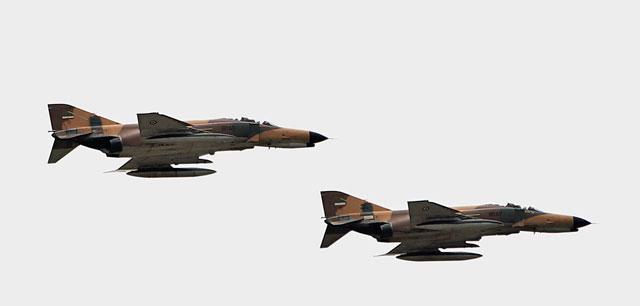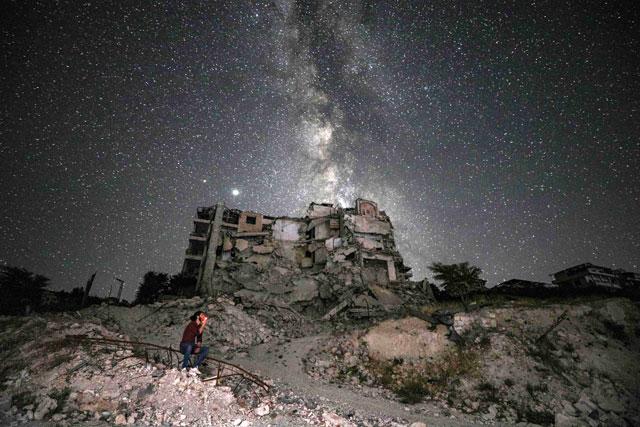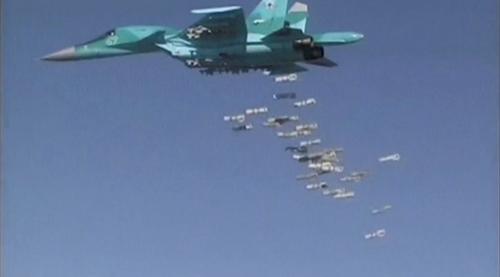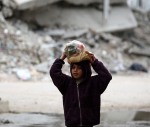You are here
In Iraq, US and Iranian forces move in separate areas
By AFP - Dec 04,2014 - Last updated at Dec 04,2014

WASHINGTON — Revelations about Iranian air strikes against Islamic State (IS) militants in Iraq have illustrated how American and Iranian forces are operating in separate areas to avoid confrontation, part of a fragile alignment fraught with risk, US officials and analysts say.
Air raids by Iranian F-4 Phantom fighters over the weekend reflect a pattern in which Iranian or US military advisers have carved out separate spheres in Iraq as the two archrivals seek to defeat a common enemy — the IS group, defence officials said.
"It was in eastern Diyala province," Pentagon spokesman Colonel Steven Warren said of the air strike. "We have not had any air activity there."
The bombing run in eastern Iraq marked the first time the Iranian air force had flown its F-4 fighters in a combat mission against the IS group, US officials said.
Defence officials said both Tehran and Washington want to avoid confrontations or accidents that could spin into an international crisis or feed sectarian violence, and take pains to steer clear of the other nation's troops.
For the moment, the US-led coalition is ready to tolerate Iranian military advisers and aircraft in eastern or southern provinces with large Shiite populations, defence officials said.
"There's a tacit understanding we're not going to operate in the same space. And they're not targeting American forces," a senior defence official, who spoke on condition of anonymity, told AFP.
"We know they have interests there. Iraq is their next door neighbour."
But the arrangement could easily unravel between the two enemies, and Washington is concerned that Shiite-led Iran's role could trigger an explosion of sectarian violence.
"It's a delicate balance," the official said. "The main thing is that the Iranians are supporting Iraqis in a way that doesn't fuel sectarianism."
Troops on the ground
Iran's military presence in Iraq is nothing new, as Tehran rushed military advisers to the country in June after IS fighters swept through western and northern towns.
Iran's elite Quds force has sent advisers to Samarra, Baghdad, Karbala and Al Sahra air base near Tikrit, seeking to safeguard Shiite areas and organise local Shiite militias, analyst Farzin Nadimi wrote in a report posted by the Washington Institute for Near East Policy.
Iran also has flown surveillance drones in Iraq, US officials said, and analysts say Iranian pilots have helped fly Russian-made Su-25 Frogfoot attack aircraft that Tehran supplied to the Baghdad government several months ago.
An Iranian pilot, possibly operating as a forward air controller, was reportedly killed in Samarra in July, Nadimi wrote.
"They've had troops and advisers on the ground for a long time. And they have been flying UAVs [unmanned aerial vehicles]," the defence official said.
The air raid involving the F-4 fighters represented "an expansion in capabilities", he said.
But Iran's fighter flights were also a show of power and influence, said Ali Reza Nader, an analyst at the RAND Corporation think tank.
"Iran doesn't have to conduct air strikes," Nader said. Iran's leaders "want to demonstrate that Iran is a force to be reckoned with".
The silent partnership suits both Tehran and Washington, as the United States is mindful that if it embraced open military cooperation with Iran, Israel and Sunni Arab allies would be enraged, Nader said.
Any degree of collaboration in Iraq between the two countries will hinge on the outcome of Western nuclear diplomacy with Tehran, he said.
"We'll have to see what happens with the nuclear negotiations. If theyre' not succesful, then the case for cooperation is not very strong," he said.
'Plenty of targets'
US officials hope the Iranian air raids will pile pressure on the IS militants, who seized large parts of Syria and Iraq earlier this year as Iraqi army troops retreated in panic.
And they say there is little risk of competing over which IS units to hit.
"There are plenty of targets for everybody," said a second defence official.
After hundreds of US and coalition air strikes since August — and after weapons deliveries from both Tehran and Washington — the Iraqi army and Kurdish forces have made some modest advances but the IS group has yet to be driven out of from strongholds in the north and west.
US and allied aircraft renewed air raids in Iraq against IS over the past three days, the military's Central Command said. American and coalition warplanes conducted 11 strikes in Iraq since Monday in the north and west, including four raids against IS extremists near Mosul, it said in a statement.
Unlike Iran, Central Command releases regular updates on its strike sorties, describing the geographic areas where IS fighters were targeted. But there has been no mention of coalition strikes in eastern Iraq, near Iran's border.
Related Articles
Iran is to help Iraq rebuild its army under an agreement that could formalise Tehran's military support for its neighbour, which remains under assault by the Islamic State (IS) group.
BEIRUT — Air strikes targeting positions of Iran-backed militias in eastern Syria killed nine fighters on Sunday in the second such raid in
TEHRAN, Iran — Russia has stopped using an Iranian air base for launching air strikes on Syria for the time being, Iran's Foreign Ministry s


















